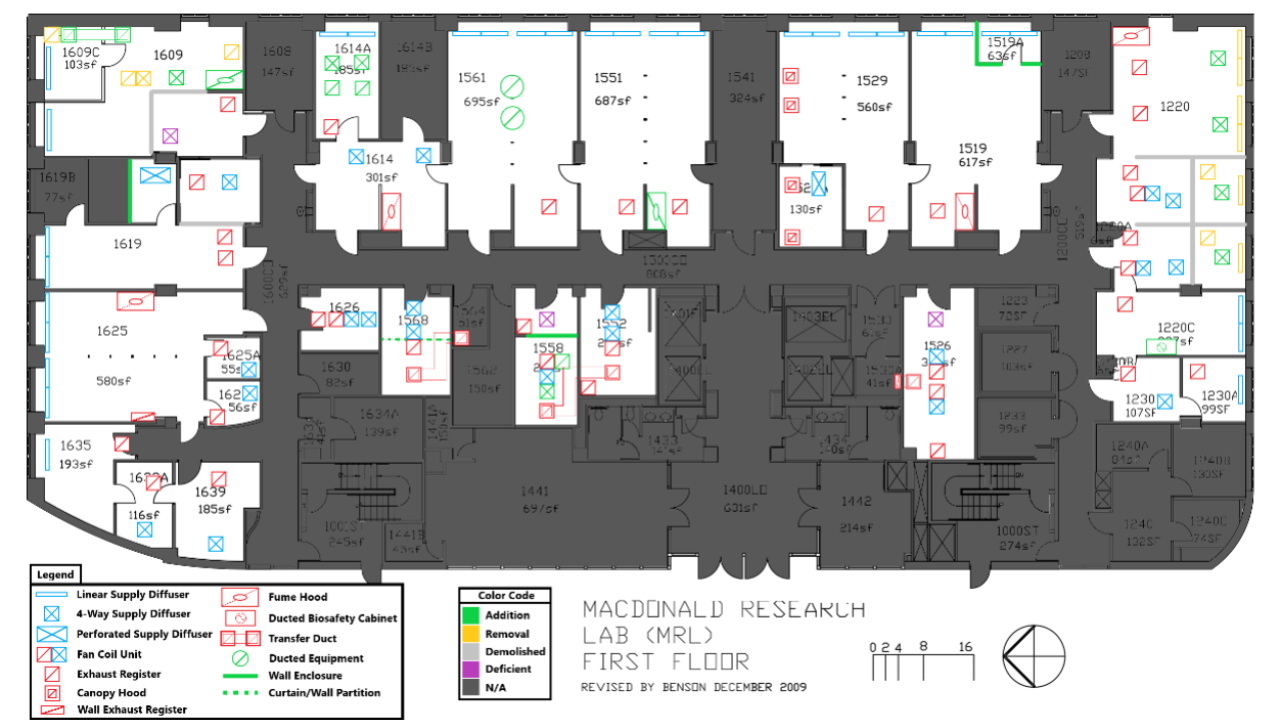The Laboratory Ventilation Risk Assessment (LVRA) is a key component for the Smart Buildings and Labs Program, led by Facilities Management, to safely reduce energy in state-funded buildings and assist with achieving UCOP energy initiatives such as carbon neutrality by 2025 and 2% reduction of energy use intensity on an annual basis. The program adopted the LVRA process from a ventilation consultant, 3Flow, which also worked with University of California Irvine to develop the Smart Labs concept at their institution as well.
The LVRA is a tool for surveying laboratory spaces and engineering controls, if present, to create a snapshot of lab operations and working environment by assessing the hazards, quantities, chemical vapor generation potential and other ventilation variables in the space. After gathering all the survey information, the data is entered into a worksheet containing an algorithm that calculates the risk potential and recommends a minimum number of air changes for safely operating each lab space.
It’s important to note that the LVRA does not take the place of a comprehensive risk assessment. Even though the LVRA recommends the minimum ventilation rate for a lab space, the risk control band only takes chemical storage and handling into account. Other variables such as hazard type (animal, biological, radiological), equipment heat loads, and ventilation effectiveness are not part of the LVRA algorithm that calculates the score for the risk control band but all these variables have an impact on the risk potential as well as the minimum air changes designated for the space.
Even though the LVRA may only be limited to spaces with chemicals, the LVRA process provides a great opportunity to gather information and communicate concerns/issues outside the scope of the program but impacts building and campus stakeholders. Field verification of mechanical drawings and space information, identification of space use and specific facility requirements, and communication of building and safety deficiencies are all examples for the program to highlight its value and bring impacted stakeholders together to resolve concerns/issues that span across multiple organizations.
As the Smart Buildings and Labs Program evolves, the road map to energy savings is not as simple as initially thought and planned. Building management and safety are two pillars identified by the program that will be the keys for successful and sustainable energy savings in the buildings and labs on campus. The LVRA plays a small, but important, part of the overall process and it’s important for all stakeholders to understand the potential concerns/issues highlighted in the LVRA reports for each building.
Despite the limitations of the LVRA, the process itself presents a great opportunity for Facilities Management to improve communications and work collectively with impacted stakeholders in finding solutions for concerns/issues that go beyond the scope program as well as the organization’s responsibilities. The important takeaway from the LVRA process is that if all stakeholders fulfill their roles and responsibilities to the university, the Smart Buildings and Labs Program will achieve the its goal for safe and sustainable energy savings.
For more information about the LVRA and/or program, please visit https://www.facilities.ucla.edu/smart-buildings-and-labs-program.
Please send any questions about the LVRA and/or program to SBSL@fm.ucla.edu.

